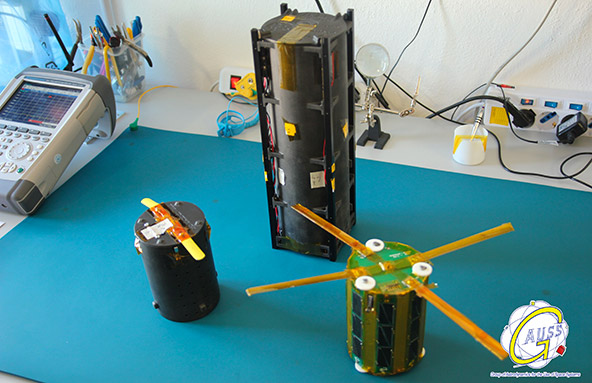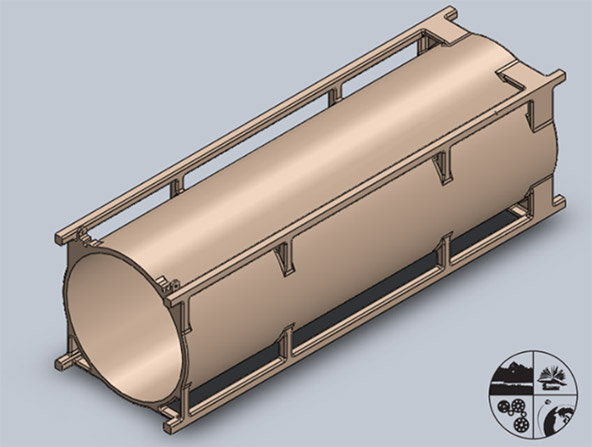The Tubesat-POD (TuPOD) satellite, the first fully 3D printed satellite to be launched from the ISS, has completed its mission and burnt up on re-entry to Earth. The TuPOD was a tube shaped CubeSat (a type of miniaturised satellite) which served as a deployment platform for smaller TubeSats.
The satellite was produced through a collaboration of CRP USA, Teton Aerospace (Tetonsys), Morehead State University and JAXA. It deployed TubeSats created by TANCREDO and OSNSAT teams.

Developing the TuPOD for space
The concept for the multifunctional TuPOD satellite began with a joint project between Group of Astrodynamics for the Use of Space System (GAUSS) and Tetonsys, to assist in the launching the TANCREDO-1 TubeSat from the International Space Station (ISS).
There are currently no platforms to specifically launch TubeSats and the square shape of the ISS’s regular P-Pod launcher cannot accommodate satellites which are a circular or tube shape.
The resulting TuPOD system was capable of functioning as both a satellite and release platform for both the TANCREDO-1 and the Open Space Network satellite (OSNSAT).
Once the TuPod met the mechanical requirements for space applications after testing at Moreheard State University (MSU), it was integrated into the JEM Small Satellite Orbital Deployer (J-SSOD), produced by JAXA (which 3D printed a space drone earlier this year). The J-SSOD allowed the TuPOD to be launched from the ISS.
The satellite successfully deployed its two on-board TubeSats 83 hours after its release from the ISS, before transmitting a morse code over FM signal for 4 days.

Manufacturing the TuPOD
The TuPOD satellite’s structure was 3D printed in as a single part by CRP USA using a CAD design produced by Tetonsys.
Using additive manufacturing enabled more complex designs, and made it easier to add quick improvements. The specially customised design of the TuPOD includes a set of rails that enable it to fit inside the launcher.
The TuPOD’s internal satellite BUS was produced directly from a 3D CAD file without the need for further tooling. Tetonsys was able to refine the design for the BUS without incurring large costs.

3D printing with Windform XT
The material used for the structure was Windform XT 2.0, a material developed by CRP Technology based in Modena, Italy, for wind tunnel and track testing for Formula One Racing. Tetonsys then added the electrical components to the 3D printed satellite.
This is not the first time that CRP has used Windform XT 2.0 material in this way. CRP also used the material to 3D print parts for the KySat-2 CubeSat in 2013.
“Windform XT 2.0 has passed all the flight qualification tests in as complex systems as the International Space Station…” said Chantal Cappelletti, a project manager at GAUSS.
“This achievement, unimaginable until recently, opens many perspectives on the possibility of using Windform materials for space applications.”
“Unlike many technologies that were originally developed for Aerospace that are then adapted to Motorsports, Windform XT 2.0 is a purely Motorsports drive material,” added Stewart Davis, Director of Operations at CRP USA.

For more information on 3D printing in space, subscribe to our free 3D Printing Industry newsletter, follow us on Twitter, and like us on Facebook.
Featured image shows The TuPOD deployed in space. Photo via NASA.


